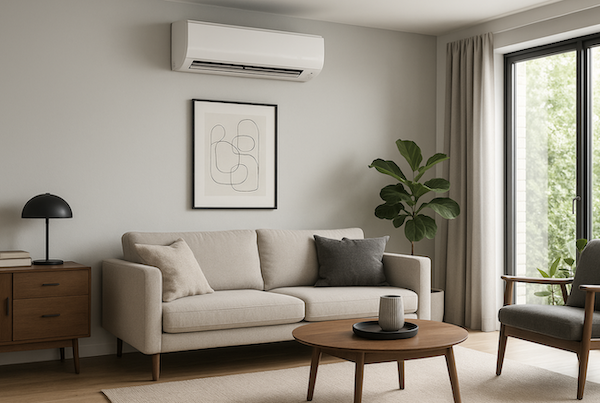
Australia is widely acknowledged as being a warm country. However, it might surprise you to discover that it is actually ranked as the 103rd hottest country in the world based on average year-round temperature. (According to World Population Review).
Senegal is the hottest, in case you were wondering, closely followed by Mali and Burkino Faso. The coldest is Russia, and then Canada.
One reason for this is because winters in Australia can be quite nippy, especially in the southerly parts of New South Wales, Victoria and, of course, pretty much all of Tasmania. During the months of June to August, the mercury can sometimes struggle to get into double figures Celsius during the day. At night, it can dip into minus territory.
When such weather hits, it’s important to be in a home that can keep you warm and protected against the elements. Thankfully, there are plenty of ways you can do that. Here are six of the best steps you can take.
1. Get a Good Climate Control System
Probably the easiest way to keep warm is to have a good climate control system running in your home.
Having one enables you to regulate the heat in each room as you see fit and prevent you from having to live in a cold, mood-destroying environment.
If you’re considering installing a new heating system or upgrading your old one, it’s worth getting advice from professionals like Alliance Climate Control. They can help to assess your home’s layout and recommend the most efficient heating options for your living spaces.
2. Proper Insulation
If your property constantly feels cold, there is a good chance that it does not have good insulation within it.
Insulation is very important for a home because it acts like a thermos for it by keeping warm air in and cold air out. If your ceiling, floors or walls are all insulated, you’ll go a long way towards maintaining a more comfortable and warmer residence.
Roof insulation is especially vital because heat rises. So, if you don’t have a barrier in place, it will escape quickly. Therefore, it is a good idea to upgrade to batts or blow-in insulation if your current one isn’t up to scratch.
While it can be trickier to manage in existing homes, it is also worth insulating your walls. The best way to do this might be via injection methods that don’t require a full renovation. However, a qualified professional will be able to advise accordingly.
3. Seal Those Draughts
You could have the best heater in town, but if cold air is slipping into your home through every crack, it won’t matter much.
Draught proofing your doors and windows is a quick and affordable fix that can significantly boost your home’s ability to retain heat. To do this, use self-adhesive weather strips on window frames and add door snakes or automatic draught stoppers under all your doors.
If you’ve got a fireplace, it is best not to use it and instead block it with a chimney balloon or cover it up to prevent heat loss. Additionally, while it might not be the first thing that springs to mind, don’t forget old keyholes. Those little gaps can let a surprising amount of cold air into your home.
4. Upgrade to Double Glazing
If your windows comprise single panes of glass, they can make any room feel like an icebox. However, double glazing windows is a simple solution that can create a real difference.
As its name suggests, these types of windows have two layers of glass with a gap in between, which acts as insulation. Aside from being a good source of warmth, they also cut down outside noise and condensation.
Admittedly they can be a pricey, upfront investment. But they can add significant value to your home and save energy over time.
5. Choose the Right Curtains
If you can afford double glazing, you will definitely want to put up good quality curtains that are designed for heat retention.
The most effective ones are heavy, lined, and floor-length because they trap warmth inside them and block cold air from radiating off the glass.
If you do put these curtains up, make sure you open them during the day to let in sunlight, then close them at dusk to keep the heat in. You should also consider putting pelmets above your curtains or rods that sit snug against the wall, as this can help stop air from escaping over the top.
6. Layer Up Your Flooring
If you have got tiles or bared, exposed wooden floorboards, you’ll probably be well away of how cold they can get in the winter. Indeed, bare floors can account for up to 10% of the total heat loss in your home.
By putting down carpet or rugs on them you will provide extra insulation to your home, which your toes will thank you for, come the early mornings of winter.
Should you not want to buy rug, here is how you can make one yourself.
If your budget can stretch to it, consider having underfloor insulation or heated flooring installed, especially in the bathroom and bedrooms. There is nothing worse than the feeling of putting your feet on them first thing on a cold and frosty July morning.
 My Favourites
My Favourites










Speak Your Mind